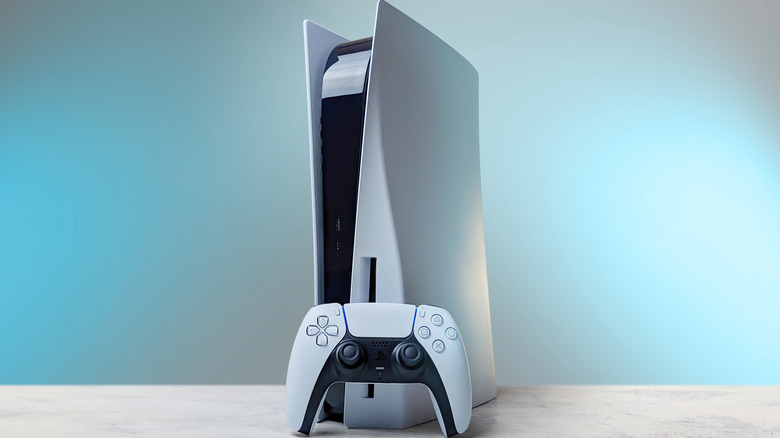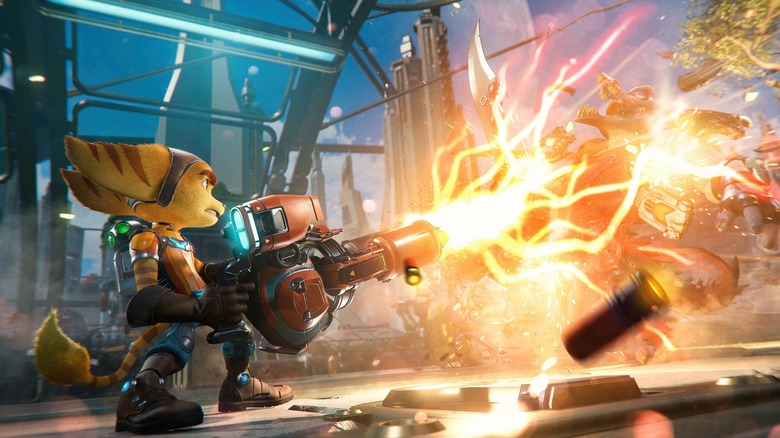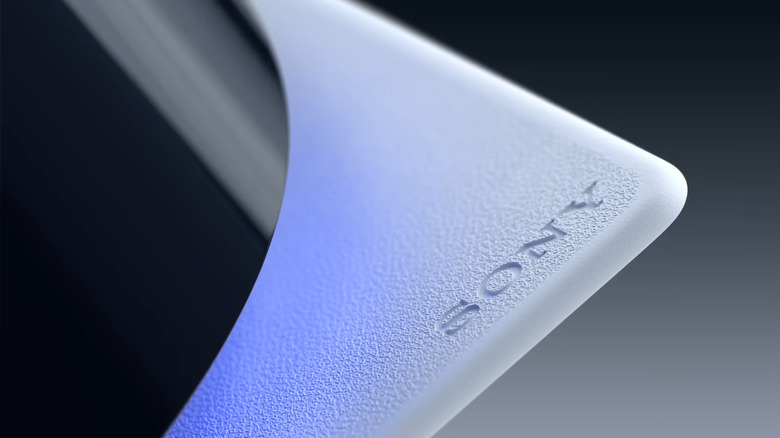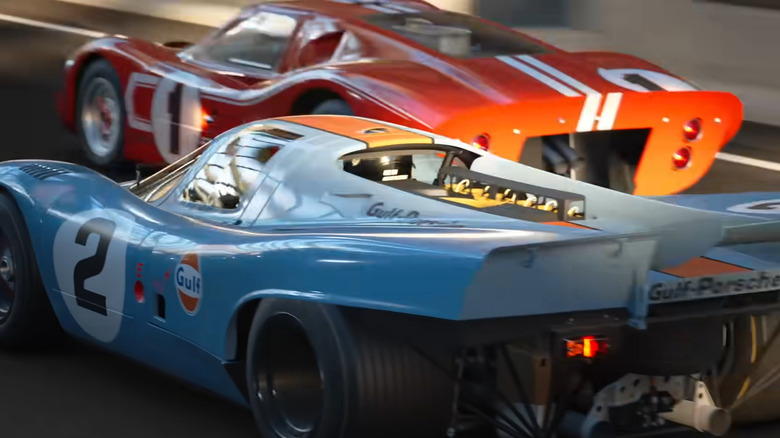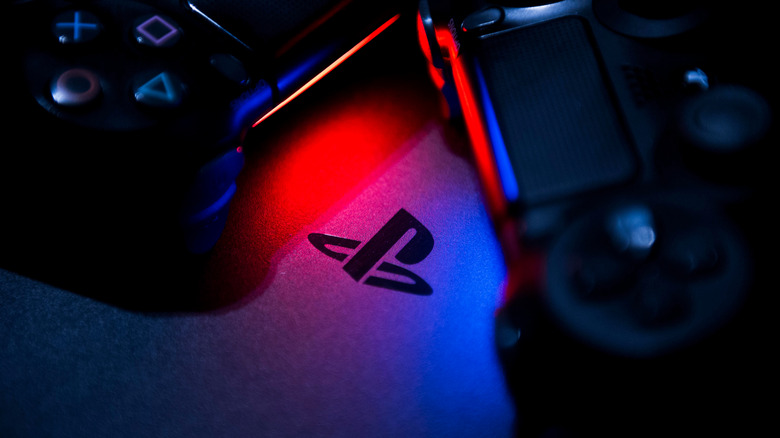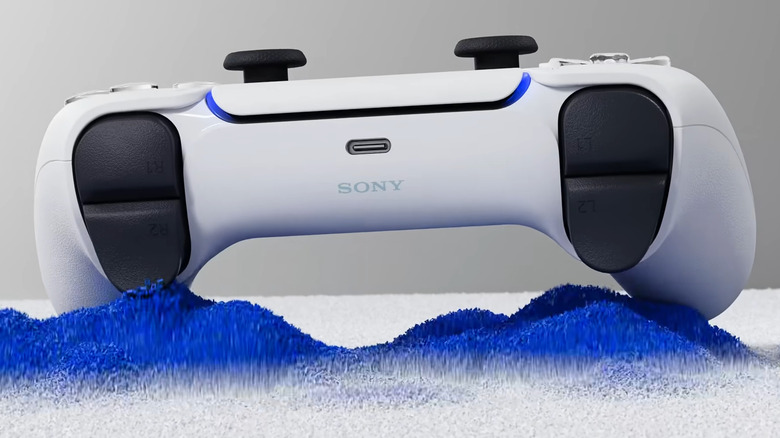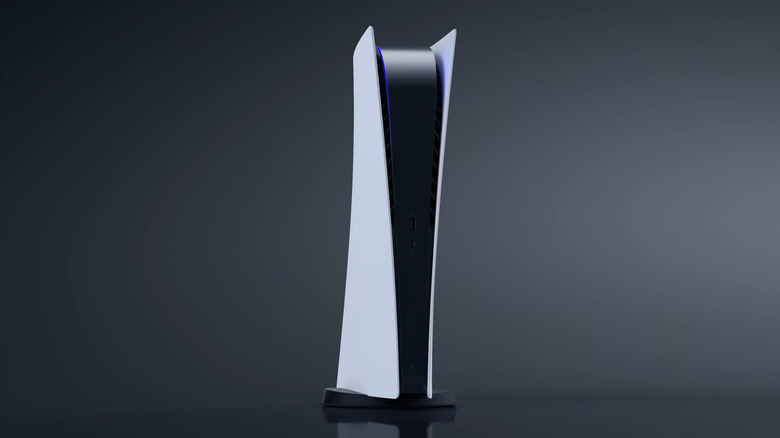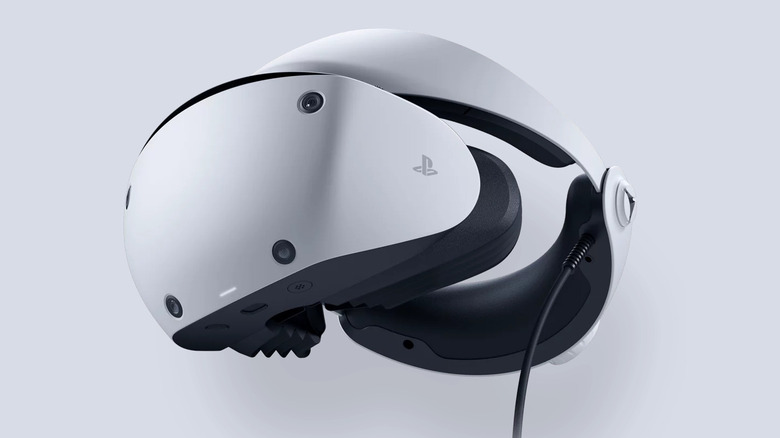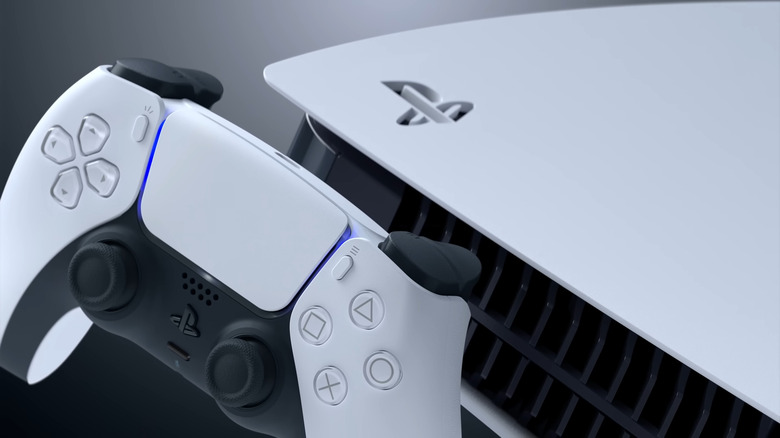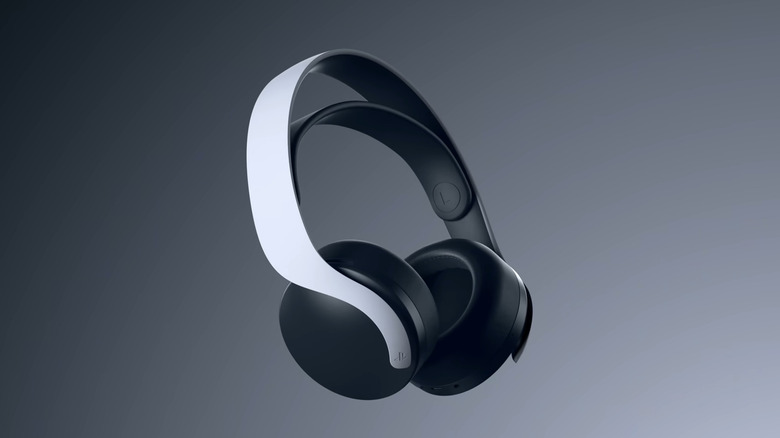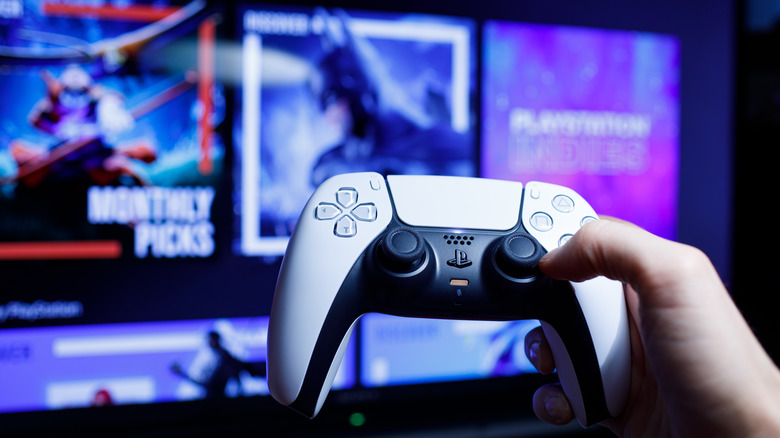10 Times The PS5 Destroyed Xbox
In the mid-1990s, an electronics company named Sony decided to dip its toes in the gaming industry. Emboldened by the successes of Sega and Nintendo, Sony developed the PlayStation. With a price point of $100 less than its competitors, paired alongside console exclusives like "Tekken" and "Crash Bandicoot," the original PlayStation cemented itself as a household name.
In a way, the success of the PlayStation, and the overwhelming success of the PlayStation 2, ended the original console war between Sega and Nintendo. However, a new challenger, Microsoft, reiterated a new console war when they released the Xbox in 2001. Since then, generation by generation, Sony and Microsoft have released comparable consoles. To differentiate their products, both companies engage in a constant arms race. Through hardware differences or exclusivity rights for games, Sony and Microsoft have been each other's healthy competition for more than two decades.
The release of the PS5 in 2020 represented the 4th round of console wars between Sony and Microsoft. Correspondingly, an endless swirl of "Which console is right for you?" articles followed. Instead of taking that even-handed approach, this article will examine some of the times the PS5 edged ahead of its main competitor, the Xbox Series X|S. A little friendly competition never hurt anyone, right? Well, it can, and did, but only for Microsoft here.
More exclusives than Xbox (so far)
The hardware differences between PlayStation and Xbox, across generations, have been relatively small. Consequently, a large part of creating a unique console experience comes down to game exclusivity rights. Simply put, which games can someone play on the PlayStation 5, but not on the Xbox Series X|S?
Unfortunately, due to global GPU shortages early in the PS5's production cycle, it has taken years for the console to reach enough households to warrant releasing games exclusively on the PS5. As a result, a somewhat lackluster lineup of console exclusives accompanies the PS5 compared to the game library of the PS4. But, those same supply-chain problems that plagued Sony also impacted Microsoft. Consequently, the Xbox Series X|S's console exclusive library is even more anemic than the PlayStation 5's console exclusives in early 2023. Big-name hits like "Ratchet and Clank: Rift Apart," alongside other indie gems like "Returnal," have already shown off the PS5's incredible capabilities.
2023 is set to be a big year for PS5 exclusives, with "Final Fantasy 16," "Final Fantasy 7 Rebirth," "Spider-Man 2," "Death Stranding 2," and more all on the docket. It may be understated to say the console exclusives for the PS5 are heating up. Despite Xbox's massive upcoming console exclusives such as "Starfield" or "Avowed," the crown for best console-exclusive games still goes to the PlayStation 5.
Overall Sales Numbers
In sports, when the losing team makes a little comeback and starts feeling confident again, the winning team can rebuttal, "Scoreboard!" It is a remark to remind the losing team about the current state of affairs — that they are losing. Well, Sony could yell out "Scoreboard!" about its current console war with Microsoft based on its overall sales numbers.
According to Forbes, the PS5 has sold approximately 32 million total units compared to only approximately 20 million total units sold for the Xbox Series X|S. The PS5 has consistently shown higher demand in the video game console market. That is not to say, however, that Sony's lead is growing. The ratio of PS4s sold to Xbox Ones was even greater at around 2:1.
Whether or not that absurd 2:1 sales ratio can ever be achieved again will come down to how well Sony can meet customer demand. Based on previous generations, it is not farfetched to think that Sony's lead in the sales department could be even greater had they had enough supply to meet customer demand. Only time will tell if the 2:1 sales ratio will ever be met again, but what is certain is that Sony dominates Microsoft in console sales.
Quicker Loading Times
More powerful hardware was one of the main selling points for the Xbox Series X|S due to its faster GPU and bigger SSD storage. However, does raw power matter when not refined? According to optimization tests for cross-platform games run on the PS5 and Xbox Series X|S, the PS5 surprisingly performed better despite its marginally worse hardware.
In tests by Kotaku, results pointed towards the PS5 having faster loading screens. For example, getting from the PS5 home screen to the "Devil May Cry 5" menu screen took roughly 20 seconds, whereas the Xbox Series X took 42 seconds. Other tests on cross-platform games like "NBA 2k21" yielded similar PS5-favored results. Additionally, upon release, cross-platform games like "Assassin's Creed Valhalla" ran much smoother on the PS5 due to its lack of screen tearing. Over time, the Xbox Series X solved many of the optimization issues experienced early in the console's lifespan, but that did not occur until after the PS5 already gained a reputation for better hardware optimization.
Getting Developers on board early
Game developers are, at their core, craftspeople with mastery of their tools. Give a craftsperson a new tool and it will take time for them to learn its uses and develop its mastery. According to reporting from The Verge, and confirmed by commentary from Richard Leadbetter of Digital Foundry, Sony gave its developers more time and a more robust toolset, compared to Microsoft, before the launch of the PS5.
Microsoft's lean into making its platform PC-compatible required changing from the XDK (Xbox Developer Kit) to the more general GDK (Game Developer Kit). Consequently, game studios familiar with the XDK needed to learn new skills to get their games next-gen compatible. On the other hand, the PS5 dev kit only expanded on existing features, making its transition for developers to the next-gen hardware a walk in the park. As was previously remarked upon, the optimization difference for cross-platform games like "Assassin's Creed Valhalla" between the PS5 and Xbox Series X could be explained by Sony's developer-friendly practices.
Controller Innovations
Throughout the console wars between Sony and Microsoft, a smaller channel of "controller wars" have played out. While Sony's DualShock design from the PS2 set the industry standard for controllers, Xbox controllers from the Xbox 360 era long wore the crown of public consensus. The Xbox 360 controller's build quality and better feeling triggers and joysticks were preferred to the PS3's. Making up a bit of distance, the PS4 brought the controller-war competition closer than ever before. And finally, the PS5's DualSense controller surpassed the Xbox Series X|S's controller due to unceasing innovations.
Feedback in console controllers traditionally comes from rumble packs that vibrate to shake the controller. Compared to the new haptic feedback in the PS5 DualSense controller, the old rumble packs now seem imprecise. Haptic feedback refers to realistic feeling responses from the controller in different situations. For example, getting smashed in "Madden" feels different than sliding through the mud in "Dirt 5."
On top of haptic feedback, the DualSense controller provides adaptive triggers. In a similar sense to haptic feedback, the controller now mimics the feelings of actions taken on screen. Pulling Aloy's bow back in "Horizon Zero Dawn" can be felt in the controller triggers. PS5 exclusives like "Ratchet and Clank: Rift Apart" extensively used this technology to make its numerous weapons and items stand apart. With a clean two-tone aesthetic and quality-of-life features like a built-in microphone, the PS5's DualSense controller demonstrates a masterclass of design.
PS5 Digital Edition has no performance downgrades
A drawback of the rapid rate of improvement in technology is the incredible costs associated with staying up to date. Sony and Microsoft recognize the financial burden placed on their respective consumers by next-generation consoles. As a result, both companies released a cheaper version of their next-gen console.
The Xbox Series S was released at $300, a price point $200 cheaper than its flagship Xbox Series X. To reach this reduced price point, the Xbox Series S downgraded its hardware. Namely, its SSD storage is cut in half to 512 GB, its GPU can produce only 4 teraflops of processing power instead of 12 teraflops, and its resolution is 1440p instead of 4k. Finally, the 4k UHD Blu-Ray optical disc drive is removed on the Xbox Series S.
On the flip side, the PS5 Digital Edition was released at $400, a price point $100 cheaper than its flagship PS5 model. Instead of gutting hardware, and subsequently the console's performance, Sony chose to merely remove just the 4k UHD Blu-Ray optical disc drive. A price bump for the PS5 and PS5 Digital Edition in 2022, unfortunately, impacted most non-American consumers. Even so, for those looking to enter the next-gen console market without breaking the bank, or reducing their alluring performance capabilities, the PS5 Digital Edition rests right in their sweet spot.
Next-Gen VR Tech
Sony and Microsoft have long struggled for supremacy in making next-generation console peripherals. Microsoft made its bet on AR (Augmented Reality) technology with the Kinect, and Sony made its choice on VR (Virtual Reality) with PSVR. The failure of the Kinect and Kinect 2.0 resulted in the abandonment of the technology for the Xbox Series X. Conversely, Sony continued to develop its VR technology alongside its next-gen console and released the PSVR2 in February of 2023.
Not only does the Xbox ecosystem lack the capabilities of the PSVR2, but the rest of the VR industry lacks some of the PSVR2's best features. Its roomy and comfortable headspace, incredible eye-tracking capabilities, and its controller's integration with DualSense haptic feedback technology make the PSVR2 a massive point of differentiation between Sony and Microsoft.
The PSVR2 is not without its criticisms, however. It can only be used with a hard-to-get PS5 that already costs $500+. It lacks backward capabilities with PSVR games. Oh, and it also costs $549.99 on its own. Despite its shortcomings, a decent mix of games are anticipated for the PSVR2 – a whole lot more than can be said for Xbox's Kinect.
Offline-Play Done Right
Digital Rights Management (DRM) is a key area of the console wars that Microsoft has sorely lagged. Without getting into the weeds, DRM refers to copyright protections for digital media. Ownership of digital media is blurry when considered through the lens of streaming services like Xbox Game Pass, but how does that affect a player or a consumer's experience?
On the Xbox Series X|S, it turns out, Microsoft's DRM policies massively affected player experience. Xbox had an always-online problem. It would not allow players to play games offline even when they owned or had the game downloaded to the console's hard drive. Most of the time, this didn't matter. But, when service interruptions plagued Microsoft in 2022, players were incensed that they were not able to play games they own or that were downloaded on their device while offline. Xbox would finally resolve this fundamental issue in September 2022. Sony never had this issue because offline play was available even on the PS4. In a world increasingly run online and through streaming services, getting DRM policies right will be a boon for Sony in the future.
Greater Audio Capabilities
In competition with Windows Spatial Audio, released in 2017 for the Xbox One and carried through onto the Xbox Series X|S, the PS5's audio capabilities are a sound to behold. Powered by an extra, separate AMD GPU located within the PS5, Sony's Tempest 3D is a fully dynamic sound system capable of 360 degrees of directional sound. The best part, though, is that it is fully available to everyone through any headset.
That's right, no longer is PlayStation's spatial audio locked behind Sony's first-party headsets. The PS4 had tiered headsets that withheld a rudimentary form of Tempest 3D.
Also, Tempest 3D audio automatically provides a 7.1 surround sound experience for PS4 games with surround tracks. For PS5 exclusives, Tempest 3D audio utilizes all available 3D sound data, providing a truly immersive experience. Games like "Spider-Man: Miles Morales" have been praised for their usage of the PS5's innovative sound system [citation]. Tempest 3D audio's improvements, paired with its widespread availability through any headset, make it the leader in the console gaming industry.
More refined UI and UX
Enough about the games, company practices, and hardware differences between the PS5 and Xbox Series X|S — how do they feel to use? Is there a notable difference between the user experience?
Upon release in 2020, the PS5 had better UI and UX. Its updated home screen stood in stark contrast to the Xbox Series X, whose home screen looked very similar to the Xbox One. A factor in this difference was that the new PS5 UI was all rendered in 4k, and the Xbox Series X did not have that until October 2021. Also, the PS5's new Control Center upgraded the console's maneuverability while in-game. The Control Center allows players to access recent notifications, see which friends are online, check the status of downloads, and manage console functions like power, sound, and microphone controls.
In response to Sony's well-received UI and its own poorly-received UI, Microsoft steadily improved its user experience. One study from late 2021 showed that Xbox may even have more efficient menus. In any case, playing catch-up is not as desirable as getting it right from the start.

